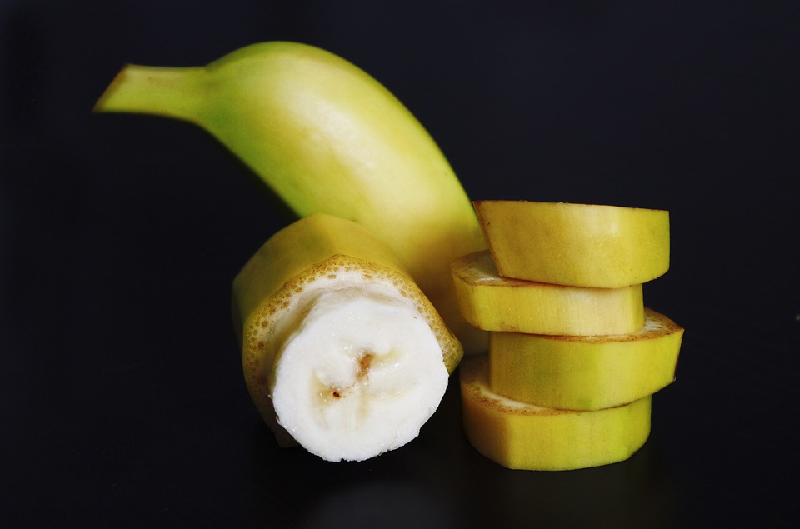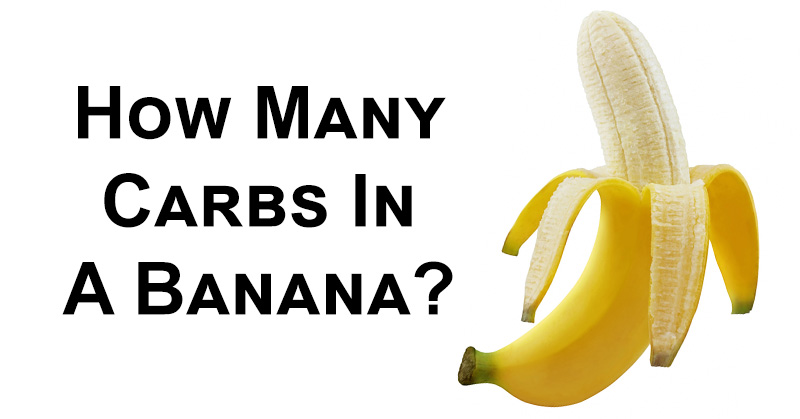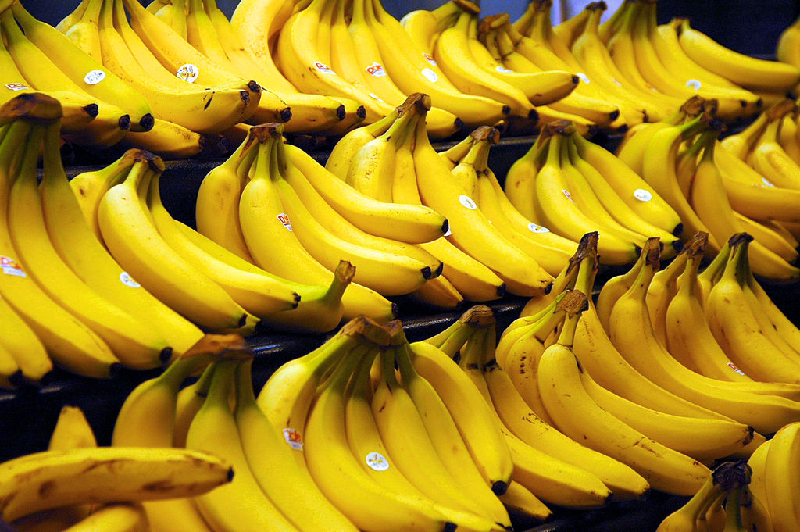Bananas, a favorite among many, are loaded with nutrients and carbohydrates. For this reason, they are often a popular choice for athletes. Banana health benefits are many, but not all bananas are created equal. You may, for example, be wondering how many carbs in a banana there are, and the answer to that is dependent on the banana’s size.
Wondering how many carbs in a banana? Here is a chart you can use as a reference:
- Extra small (less than 6 inches, 81 grams): 72 calories, 19 carbohydrates
- Small (6–7 inches, 101 grams): 90 calories, 23 carbohydrates
- Medium (7–8 inches, 118 grams): 105 calories, 27 carbohydrates
- Large (8–9 inches, 136 grams): 121 calories, 31 carbohydrates
- Extra large (9 inches or longer, 152 grams): 135 calories, 35 carbohydrates
- Sliced (1 cup, 150 grams): 134 calories, 34.2 carbohydrates
- Mashed (1 cup, 225 grams): 200 calories, 51.3 carbohydrates
In addition to “how many carbs in a banana,” you may be curious to know what these carbs can do for your health! The carbohydrates banana offer can do several things for your body.
For example, bananas:
1. Provide Energy and Proper Cell Function
You might be wondering how many carbs in a banana there are because you’re on a low-carb diet. If that is the case, you should know that even with low-carb diets, carbohydrates are still your main source of fuel, or energy.
Your body takes the food you eat and turns it into sugars and starches. This is so it can be absorbed into the bloodstream. When this occurs, the sugars and starches become glucose, or blood sugar. And your body needs glucose in order to function correctly. Glucose keeps you mentally sharp, plus it provides much-needed energy for exercising and everyday tasks.
Furthermore, banana health benefits include the content of adenosine triphosphate, or ATP. ATP is an important source of energy in your cells. It’s formed through a natural chemical reaction that stems from digestion of carbs, proteins and fats. And ATP is crucial for proper cellular function.
Bananas have plant cells that contain ATP. So, when you eat a banana, it’s converted into glucose, then used to make ATP as needed.
Bottom line, banana health benefits include giving your body the energy it needs. If you’re wondering how many carbs in a banana there are because you’re looking for a way to boost energy, bananas are an excellent choice!
2. Help with Digestion
Banana health benefits extend to your digestive system, too! If you’re wondering how many carbs in a banana there are, you might also be concerned about their glycemic index. Bananas, however, have a low glycemic index. While they’re sweet in taste, they’re also high in fiber, which helps keep the digestion process at a tolerable speed for your body.
Moreover, bananas contain pectins, which is a curious sort of fiber. Some pectin is water-soluble and some are not. But as a banana ripens, the water-soluable pectins increase. This is what makes the banana get softer, which increases the level of fructose. Fructose helps stabilize the rate at which carbs are digested. This is why it’s better to eat ripe bananas rather than the green, unripe variety.
And regarding digestion, banana health benefits continue with the content of FOS. FOS are carbs filled with fructose that are not broken down by the enzymes in the digestive system. Instead, they move to the lower intestine and are metabolized by good bacteria. This is part of why it’s crucial to heal a problematic digestive system. A leaky gut, for example, maybe have trouble with this as well as other digestive processes. Be sure to give your body the good bacteria it needs to keep your gut working like it should.

3. May Help Give Athletes a Boost Mentally and Physically
Banana health benefits continue with the ability to offer aid to athletes. In fact, researchers conducted studies involving runners. They set out to determine what they preferred to eat before, during and after an endurance run. During the race, runners strongly preferred bananas. This is likely due to the energy from glucose and the fact that bananas are easy to digest, however, the specific reasons were not indicated in the study. (1)
So, if you’re still concerned with how many carbs in a banana there are, know that they can really help you up your exercise game! For example, Cornell University examined the effect of bananas on exercise endurance. In the study, athletes performed 90 minutes of running followed by 90 minutes of cycling or cycling to exhaustion. Athletes also consumed a placebo, a banana blend, or a solid banana. Researchers saw that the solid banana was extremely effective in enhancing endurance exercise performance. (2)
Are you an athlete that wants to know how many carbs in a banana there are? A better question, perhaps, is how beneficial these carbs can be! The Journal of International Society of Sports Nutrition studied young gymnasts, who were ages 12 to 14. Gymnasts who consumed carbohydrates were more focused and had fewer fall during their performances. (3)
Generally speaking, it’s best to eat bananas an hour or so prior to exercise. Eating just before an event can compromise performance, as the body will direct blood flow to the digestive system directly after you eat. (4)
Caution:
Bananas are a great source of potassium, which is a nutrient your body needs. However, certain medical conditions can be made worse by too much potassium. Speak to your doctor if you have any concerns. Additionally, if you have any adverse reactions to bananas, you may be allergic and should avoid eating them.



